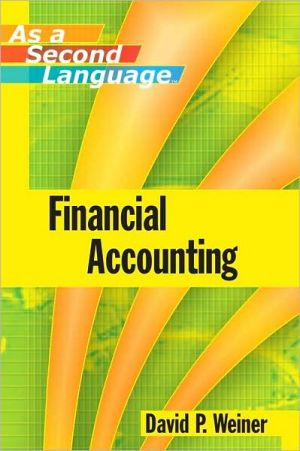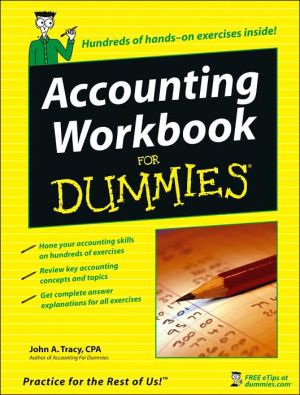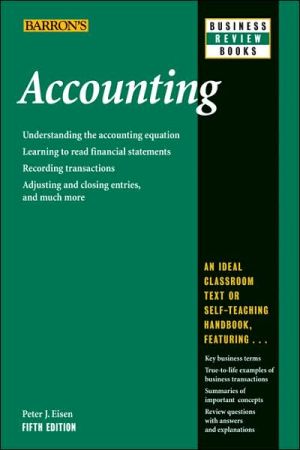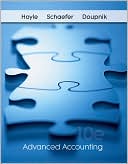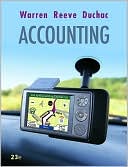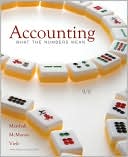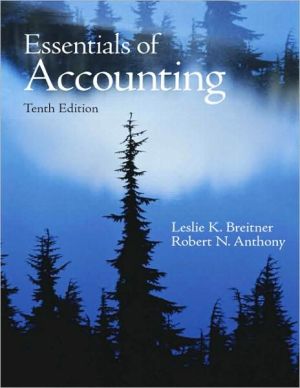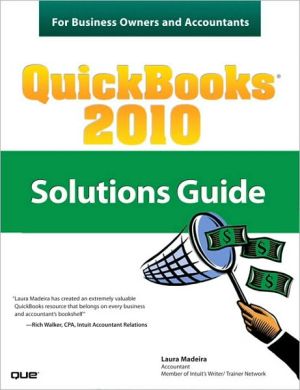Financial Accounting as a Second Language
Accounting may be challenging, but with training and practice students can come out of a financial accounting course having achieved success! With David Weiner’s Financial Accounting as a Second Language, students will get the practice and training they need to better understand fundamental principles, build confidence, and solve problems.\ The goal of this title is to: introduce the language of accounting, explain the core concepts of accounting, and learn how to apply these core concepts to...
Search in google:
Get a better grade in financial accounting! Accounting may be challenging, but with training and practice you can come out of your financial accounting class with the grade you want! With David Weiner’s Financial Accounting as a Second Language, you’ll get the practice and training you need to better understand fundamental principles, build confidence, and solve problems. Here’s how you can get a better grade in financial accounting: Understand the basic concepts Financial Accounting as a Second Language describes the complete accounting cycle, from engaging in transactions to preparing a set of financial statements. You’ll learn how to prepare a statement of cash flows and accounting techniques for specific business transactions. By understanding these principles, you’ll have a coherent framework that will help you better understand your course. Study more efficiently and effectively Financial Accounting as a Second Language provides time-saving study tips and problem-solving strategies that will help you apply concepts to succeed in the course. Improve your problem-solving skills Financial Accounting as a Second Language will help you develop the skills you need to solve a variety of problem types––even unfamiliar ones!
Preface ixBasic Financial Accounting Concepts 1Learning Objectives 1Accounting as the Language of Business 2Objectives of Financial Reporting 4Basic Accounting Concepts 5The Basic Financial Statements 8Using Financial Statement Information 17Review Questions 18Practice Multiple Choice Questions 21The Accounting Cycle 24Learning Objectives 24Transaction Analysis 26The Accounting Cycle 29Summary of the Seven Types of Accounts 30The Rules for Debits and Credits 30The Chart of Accounts 32Cash Basis versus Accrual Basis 33The Journal Entry 33Recording Journal Entries 38Posting to the Ledger 40The Trial Balance 41Adjusting Entries 41The Closing Process 45Balancing the Permanent Accounts 47Correcting Errors 47Preparing the Financial Statements 48Comprehensive Illustration 49ReviewQuestions 59Practice Multiple Choice Questions 61Internal Controls, Cash, and Receivables 64Learning Objectives 64The Sarbanes-Oxley Act Requirements 65Sarbanes-Oxley and Internal Control 66Reporting Cash 68The Bank Reconciliation 70Accounts Receivable 73Notes Receivable 77Getting Cash for Receivables 78Summary of Journal Entries 79Review Questions 80Practice Multiple Choice Questions 83Inventory 85Learning Objectives 85Basic Inventory Issues 86Purchasing and Selling Inventory 89The Cost of Goods Sold Model 91The Periodic Method versus the Perpetual Method 92Taking Inventory and the Cost Flow Assumptions 95Lower of Cost or Market (LCM) 102Impact of Inventory Errors 104Review Questions 107Practice Multiple Choice Questions 109Noncurrent Assets and Depreciation 113Learning Objectives 113Noncurrent Assets 114Long-Term Investments 114Property, Plant, and Equipment 116Declining-Balance Method 121Depreciation Conventions 123Intangible Assets 126Impairment 129Accounting for Research and Development 131Summary of Journal Entries 132Review Questions 133Practice Multiple Choice Questions 135Current and Noncurrent Liablities 139Learning Objectives 139Liabilities 140Current Liabilities 140Long-Term Liabilities 147Summary of Journal Entries 154Review Questions 155Practice Multiple Choice Questions 158Stockholders' Equity 160Learning Objectives 160Stockholders' Equity 162Summary of Journal Entries 173Review Questions 174Practice Multiple Choice Questions 176The Statement of Cash Flows 178Learning Objectives 178Objectives of the Statement of Cash Flows 179Format of the Statement of Cash Flows 180A Step-by-Step Approach to Solving Statement of Cash Flows Problems 182Review Questions 202Practice Multiple Choice Questions 203Review of Financial Statements and Financial Statement Analysis 205Learning Objectives 205Horizontal and Vertical Analysis 206DuPont Method 207Financial Ratio Analysis 208Review Questions 217Practice Multiple Choice Questions 218Basic College Skills 221Learning Objectives 221College Skills 222The Time Value of Money 239Learning Objectives 239Introduction 239Basic Concepts 239Making Present Value and Future Value Calculations: A Summary 245Practice Multiple Choice Questions 260Gross Profit Inventory Computation 262The Gross Profit Method 262Advanced Topics for Chapter Five: Capitalization of Interest and Nonmonetary Exchanges 266Capitalization of Interest on Self-Constructed Assets 266Nonmonetary Exchanges 268The Cpa and the Auditor's Report 272Introduction 272Generally Accepted Auditing Standards 273Glossary 277Index 299
